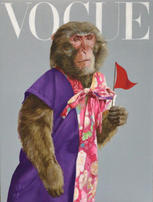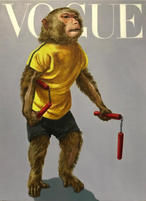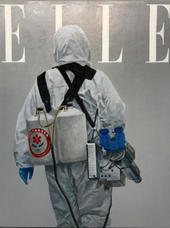2022 Exhibition

NON Fashion Magazine - Wong Chak Hung
2022.10.05 - 2022.10.29
Exhibition Statement
As a parallel to Wong Chak Hung's recent works, the Hollywood movie Catch Me If You Can tells the story of a young man surpassing discipline and regulations by exploiting the public's worship of certain social roles. In the movie, the protagonist impersonated multiple identities only through the use of clothes and cheques, whereas in Wong's work, he used magazine covers and costumes. While the former constructs a context, the latter creates a message. For him, figurative symbolism is where he wanders, he must be precise and confined to express the most.
Most fashion magazines create images by placing props in a virtual setting. Their advocacy is not centered on clothing, but on places of desire. In 1967, French semiotician Roland Barthe described fashion magazines' clothes as vetement-ecrit ("written" clothing), stating that society consumes image-clothing rather than actual garments. Thus, fashion magazines serve as systems for creating myths and meanings and it is the manufactured feeling that people are seeking. This type of soft magazine design is intended to cater to the needs of specific consumers from specific social classes, and to also serve as a tool for taming. With this virtual reality as the background, Wong sets off his theme.
In the paintings, there are likely to be figures that represent the artist or animals that resemble humans. Each of these is situated in a different role and is targeted at a specific group of social icons. Unlike his previous works, which parodied his own appearance, the figures are dressed up neatly and engaged in a serious play. Consequently, each painting echoes with a sense of madness, as well as Wong's signature sense of sarcasm, which makes the viewers smile.
This series is a new form of realism, as well as a simulacrum. Through appropriation of reality, the artist reinterprets phenomena through surrealistic means. As viewers fail to recognize the bizarre nature of these seemingly harmonious paintings, the paintings have already assumed a life of their own in this era.
Curator Shirky Chan















